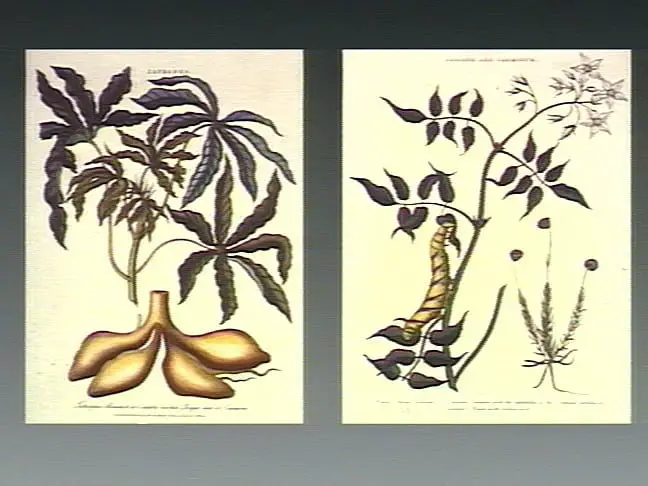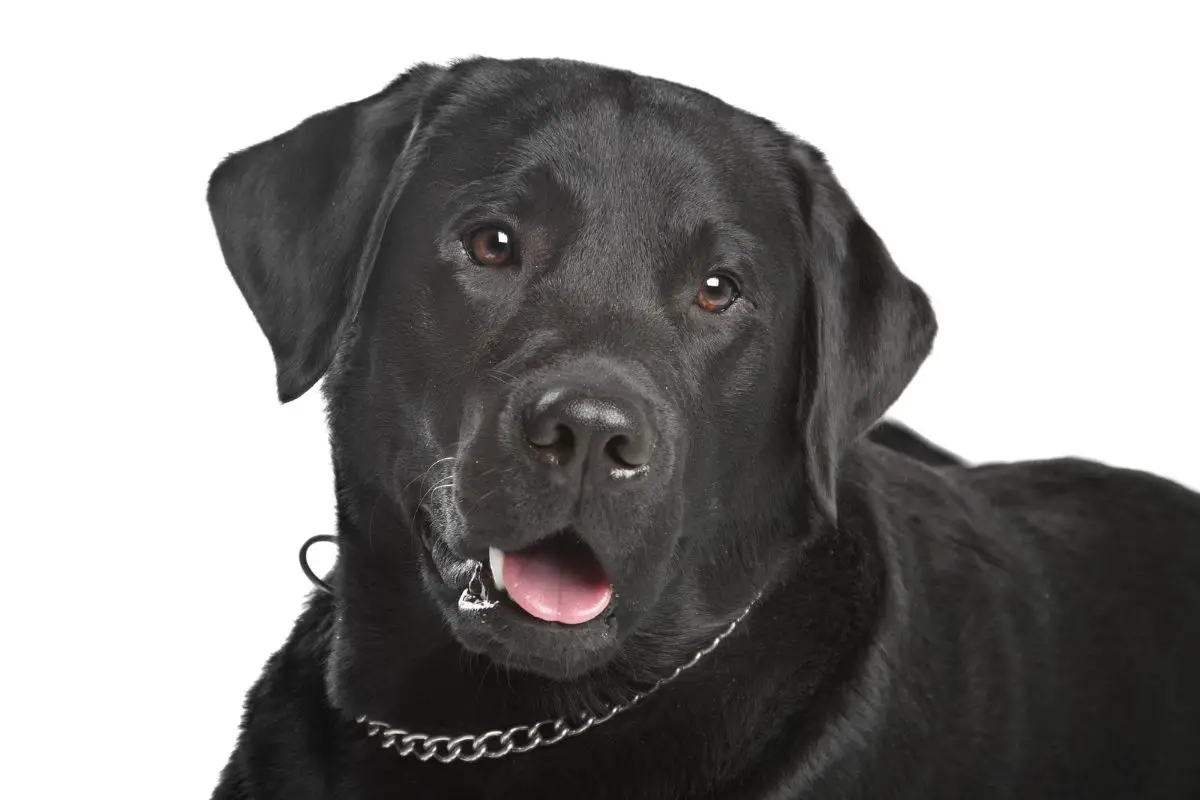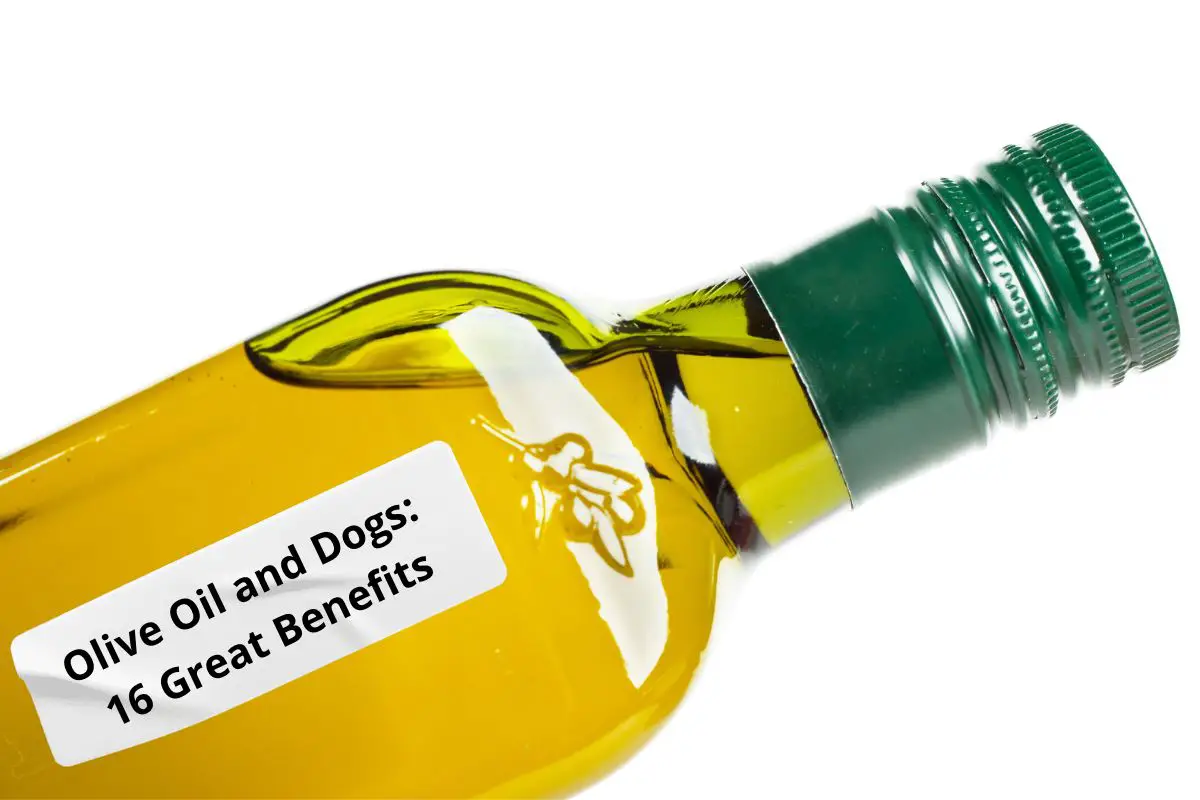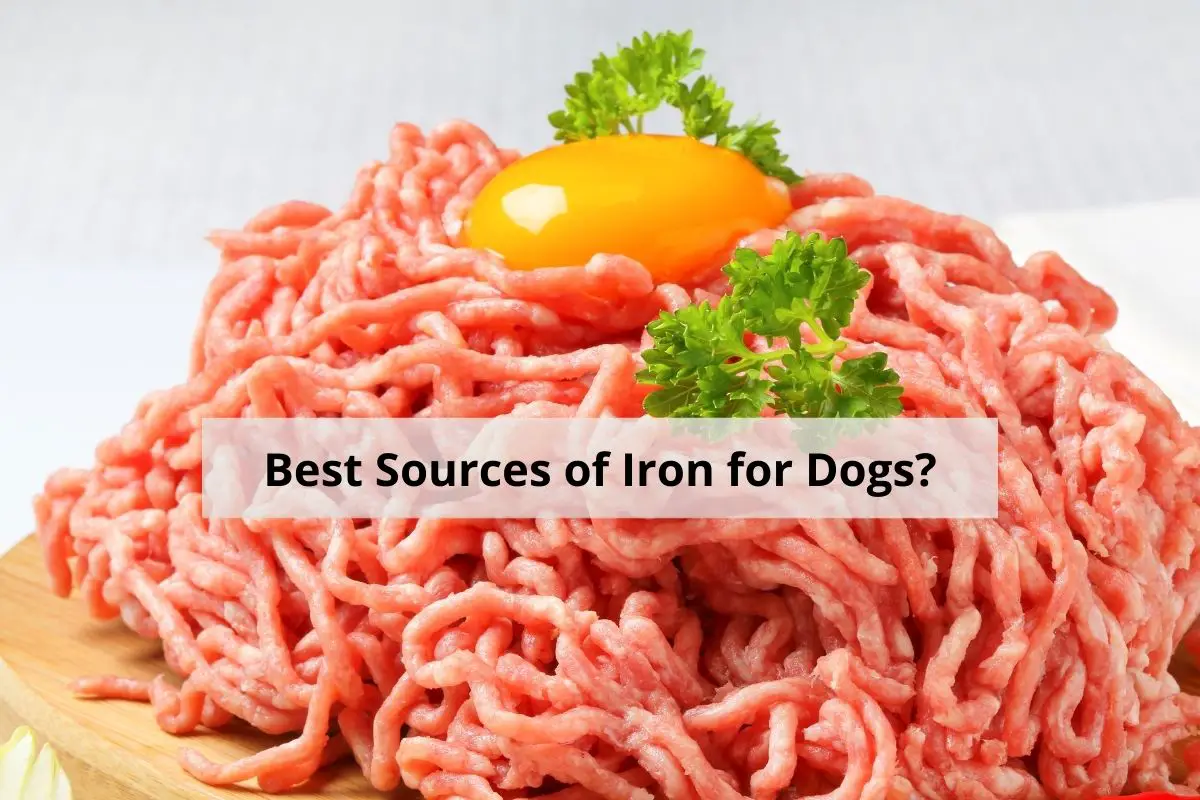This post contains affiliate links.
Tapioca is a starch that you might be familiar with in desserts such as tapioca pudding, but it can also be used as a thickening agent for your favorite soups. It’s a great ingredient for humans, but is it good for your dog’s diet?
There’s nothing wrong with tapioca being part of your dog’s diet. Some dog food even contain it. It can aid your dog’s digestion due to its high fiber content, and offers needed carbohydrates. However, it doesn’t offer much else in terms of nutrition, and there are better options for these benefits.
If you’d like to learn more about what tapioca can do for your dog, what tapioca actually is, and how you can incorporate it into your dog’s diet, we encourage you to read on.
Table of Contents
What Is Tapioca?
Many people don’t know what tapioca is, and that’s okay – it isn’t something that is mentioned a whole lot when it comes to recipes or ingredients.
Tapioca is a starch that is extracted from the cassava plant and is native to South America. The tapioca itself is a liquid that gets squeezed out of the cassava root. After extraction, the water is allowed to evaporate and turn into powder. From there, the powder can be made into pearls or flakes.
It doesn’t have a distinct flavor; rather, it is used for texture purposes. You can either use it as a thickening agent or mix it into desserts. That goes for human food anyway, but how is it incorporated into a dog’s diet?
Tapioca and Dogs
We mentioned above that tapioca is used in dog food – but why is that? It essentially boils down to the desirable grain-free label that many dog owners look for. After all, people want the best for their dog’s diet to ensure they are as healthy and happy as possible. Another reason it is added to dog food is for bulking purposes.
While tapioca is okay for dogs, it doesn’t provide enough nutritional benefits other than a source for carbohydrates; thus, it is typically used in more affordable “grain-free” dog food. Essentially, tapioca is used as a filler.
Your dog is likely to get more nutrients out of a decent dog food that includes grains than grain-free food that includes tapioca. Grains are a good source of cheap nutrients such as vitamins, minerals, and protein. Such grains include:
- Oats
- Barley
- Wheat
- Brown rice
All of which a lot of people understand as good-for-you ingredients fall under grains, which in turn gets a negative light in some dog food marketing. When switching dog food or selecting one for a new dog, we strongly encourage asking around for an opinion from experts.
Does This Mean Tapioca Is Terrible?
Not necessarily, and there are much worse fillers out there. It’s just that tapioca isn’t generally the best from a nutritional standpoint. However, this doesn’t mean it is bad. There are a couple of redeeming qualities for this ingredient.
Tapioca contains fiber, which can help your dog’s digestion. Additionally, it is a source of carbohydrates. If there is nothing wrong with your dog and he/she has good check-ups, it isn’t necessary to switch out your dog’s food just because it contains tapioca.
In fact, we recommend not switching out your dog’s food if he is healthy and happy because you never know how a dog will react to certain food, even if it is quality dog food. Plus, there’s the issue with food strikes that picky eaters are prone to do.
If you are still concerned about the food you are feeding, you can ask your vet’s advice on the matter or move to different food. Should you decide to switch out your dog’s food, it must be done slowly over 7 days to avoid digestive upsets.
What’s in Your Dog’s Food?
Knowing what is in your dog’s food is key to understanding what to choose when shifting their diet. There are lots of options out there from low end to high-end products making it confusing for a lot of people.
Every dog food company is going to put a positive spin on their product no matter how good or bad it really is, which makes a lot of people grab what is cheap and looks “good enough.” But in truth, there are a lot of low-end dog foods that are borderline unhealthy for any dog.
It’s important to remember dog food isn’t and doesn’t have to be “scraps humans can’t/won’t eat” that is a general misconception due to the popularity of certain unhealthy dog food brands/lines that are exceptionally popular.
To understand what to look for in your dog’s food, it is good to know what nutrients a dog needs to thrive. There are 5 basic nutrients dogs need:
- Protein
- Fat
- Carbs
- Vitamins
- Minerals
Additionally, a healthy dog needs to stay under their calorie counts for the day, which is around 25 to 30 calories per pound. Ideally, you’ll want to utilize these calories with food that is nutrient-dense with little filler that’s only there to add bulk.
A lot of dogs get really excited over food, which is easy to pass off as they just like to eat – but it can also come down to them not getting enough nutrients in their food, leaving them hungrier than they should be before their next meal.
The same concept applies to humans; you are going to be far more satisfied, leading up to lunch by eating a healthy breakfast over a bagel/muffin/donut.
With this in mind, what should you be looking for in your dog food, and what should you avoid?
A good rule of thumb is to skip the bottom of the barrel dog food entirely that is heavily processed and filled with things your pup doesn’t need resulting in constant hunger and even digestion problems.
You can identify this type of dog food by looking at the ingredients themselves, which are listed in order by weight giving you an easy indication of what is being prioritized. Ideally, the first ingredient should be meat, not meat meals or by-products, just meat such as chicken, beef, lamb, etc.
Following meat, healthy grains or veggies such as whole grain wheat, rice, sweet potatoes, and peas are also a great sign of good dog food. Since dog food typically has a long list of ingredients healthy or not, we won’t list everything, but we want to give you a list of ingredients to avoid.
- Rendered fat
- PG (Propylene Glycol)
- BHA (Butylated Hydroxyanisole)
- BHT (Butylated Hydroxytoluene)
- Food dyes
- Meat/grain meals and by-products
- Corn and wheat gluten
- Ethoxyquin
You don’t have to go straight for the highest-end dog food you can find; in fact, that may be unnecessary. You can get good dog food at an affordable price from many brands you see in the dog food aisle. Here are a few examples of dog foods to keep in mind:
- Purina Pro Plan. Many dog owners who are looking out for their dog’s nutrition swear by Purina Pro Plan. It’s affordable, has great ingredients, and dogs generally love the taste. If you are looking to switch to better dog food, we can’t recommend this one enough for most people. We believe you’ll see a noticeable difference in your dog’s energy and overall health.
- Hill’s Science Diet. Another great dog food is Hill’s Science Diet. It follows the golden rule of containing lots of good ingredients containing nutrients your dog needs.
- Royal Canin. You can feel confident knowing that Royal Canin uses ingredients that are excellent for your dog’s health. This is also another brand that is recommended by dog owners and vets alike.
All 3 of these come in wet form as well, and speaking of wet food, there has been a debate going on for years whether dry or wet food is better for dogs.
Is Wet or Dry Dog Food Better for Your Pup?
There is a lot of back and forth on this topic, and the general answer to which one is “better” is that they are both fine, but there are pros to each type of dog food.
Going back to the topic of tapioca, this ingredient is used in both wet and dry foods for bulking purposes; thus, you can’t really “escape” it by swapping to from canned to dry or vice versa.
Furthermore, there is bad wet food, just like there is bad dry food. Neither types are of higher quality than the other by default.
Wet Dog Food
If you are looking out for your dog’s taste buds (or sense of texture and smell specifically since dogs essentially taste with their nose), wet food is going to be much closer to the yummy people food your dog ever so desires.
Good wet food has a meaty aroma that dogs live for, making it more inviting to them, and in turn, there is less of a chance they will go on a hunger strike because they want tastier food. Furthermore, it is high in moisture, which aids in a pup’s hydration and is helpful for dogs that don’t drink enough water on their own.
The only real issue with feeding exclusively wet food is that it doesn’t encourage chewing nearly as much, which can lead to not-so-great dental hygiene and weaker jaws down the road. This can be mitigated by giving them a safe rawhide bone without added chemicals or additives such as Pet Magasin Natural Premium Long-Lasting Rawhide Bones.
If you have a picky eater or just want to give something your dog is likely going to enjoy more, there is nothing wrong with wet food. As long as you are feeding a dog food that uses good ingredients, he will be healthy and happy.
Dry Dog Food
The most popular type of dog food is dry. It is generally less expensive, more convenient, and you are in full control of the portions.
Furthermore, you can use a Wi-Fi enabled Holipet Automatic Feeder. That’s a specific example, but a free feeder really helps if you are going to be away from home for a while – or you just don’t feel like getting the food yourself. It’s also a great alternative to free-feeding, which can cause a dog to rapidly gain weight depending on the individual dog’s eating habits.
As for dry dog food itself, it promotes healthy dental hygiene and gives your dog’s jaws a workout. Most dogs are perfectly fine on dry food as long as they are getting enough water.
In terms of a dog getting tired of their food, that’s another back and forth debate in of itself. There are those who say that dogs just want to eat and don’t care about the taste, but there are examples of healthy dogs that simply stop eating their own food and start begging for human food.
If you can’t decide what is better for your pup, you can do both wet and dry food.
Mixing Wet and Dry Food
By mixing wet and dry food, you and your dog are getting the best of both worlds. Your dog gets tastier meals and increased water intake, and you save more money than if you went strictly to wet food.
What’s also great about this method is that you can feed strictly dry food when needed instead of worrying about the problems that might arise from switching out your dog’s food overnight.
This is something we recommend at least trying if your dog is starting to look down into his kibble bowl with disappointment – we think there’s a good chance he’ll happily eat his meals. Just ensure both the wet and dry food are of decent quality, and your dog should be perfectly fine.
Here you can read our article about mixing wet and dry food:
Can You Mix People Food Into Your Dog’s Food?
Another way to get added nutrients and increase palatability in your dog’s diet is to mix in “people food” with his food. It’s also an alternative to a raw diet, which is a hefty subject in of itself.
When reaching for food that humans generally eat, it is critical that you are sure that it is safe for them to eat as there are many foods out there that are great for humans but toxic for dogs. If you are unsure, a quick search result will tell you everything you need to know.
Here are safe foods you can mix in with your dog’s meal.
Tapioca
You might be thinking why we are listing this given everything we’ve said previously about tapioca being a filler, but cooking tapioca and placing it into your dog’s food can help them keep a regular digestive system as previously stated. It’s better to use tapioca for its fiber content rather than a means to bulk up food quantity.
Bone Broth
Something that you can easily add to your dog food is bone broth packaged for dogs such as Brutus Bone Broth for Dogs. Not only will this increase palatability for kibble, but it will provide extra hydration. You can simply pour it on top of their food for a boost to your pup’s meals.
Raw Egg
Another recommended food booster for dogs is placing a raw egg in their bowl -yes, it is perfectly safe. The chances of salmonella being on the shells are extremely low. Any food that humans or dogs eat has the chance of being recalled due to being unsafe to eat, and that alone is unlikely.
Still, we recommend using pasteurized eggs for raw consumption if you can. They are eggs that are cooked just enough to kill the bacteria on the shells while leaving the inside raw. This means they are considered safe for raw consumption.
Eggs are a great source of protein, and the shells themselves contain phosphorus and calcium. One egg contains approximately 80 calories, which is quite a lot for smaller dogs, but for medium and large breeds, it is an excellent meal booster once or twice a week.
Meat
Your dog will really appreciate this one. Placing cooked meat in your dog’s bowl adds a huge boost of protein and good fats. Remember to keep portions in check. If you want to feed a generously sized piece of meat, cut back on the amount of dog food that is in the bowl. Furthermore, ensure the meat doesn’t contain seasonings, dogs do not need additional salt and they absolutely love meat no matter what.
You might be wondering if bacon is okay to feed a dog. After all, there’s no better smell and taste for a dog than bacon – it accompanies everything they love: Salt, fat, and a meaty aroma. Unfortunately, it isn’t a good idea to feed it to them because of the high salt and fat content. Instead of bacon, give them straight-up pork. It’s much healthier, and your dog will love it!
However, if you are a turkey bacon eater, the good news is that this is much better for your dog, and you can safely give a bit of it to them.
You can read more about Bacon in this separate article.
Sweet/White Potato
This is a staple when recommending fresh foods that dogs can eat. Sweet potatoes contain high levels of fiber to aid in digestion, are rich in vitamins, provide carbohydrates, and are low in fat. In fact, sweet potatoes are a common ingredient in mid to high-end dog food.
You can place sweet potatoes in your dog’s food, either boiled or mashed, to give it a tasty and nutritional boost!
White potatoes are also a decent addition to your dog’s bowl, they may not be quite as dense in fiber and vitamins, but they are still a nice option. Just be sure not to give too many carbohydrates to a dog as their food already contains the right amount for them for their daily meals. Additionally, potatoes must be cooked as raw potatoes are toxic for dogs.
Brown Rice
Brown rice is considered the best kind of rice for a nutritional standpoint, and like sweet potatoes, it is another great ingredient you can find in quality dog food. It is an excellent source of carbohydrates, vitamins, minerals, and fiber.
Feeding a Raw Diet
We briefly mentioned raw diets for dogs above. This is a controversial one. There are dogs you thrive wonderfully on a diet, it poses risks, and because of that, it requires extensive research. It is also quite expensive – even more so than high-end dog food that already uses excellent ingredients that were selected for a dog’s needs.
If all goes right in a raw diet, a dog is going to be the healthiest they could possibly be, and people report that their dog has:
- More Energy
- Shiner coat
- Cleaner teeth
- Healthier skin
The diet contains nothing but fresh, whole foods. Here is a video showcasing what the typical raw meal looks like:
As you can see in the video, the dog is definitely getting a quality diet, but before thinking about doing the same for your dog, there are things you should know:
- Cost. When having a dog, your grocery bill now includes your new furry family member, but that cost is unlikely to be anywhere near as high as it is for just one human when feeding quality dog food. That cost goes up significantly more, (although still cheaper than what the average person eats a day) as much as $2.50 – $5 a day.
- Risks. If you are making your own meals, it is easy to actually harm your dog’s health over time if they aren’t getting the proper nutrients. Research is the name of the game here, but with the widely available resources you can access on the internet, it won’t take long to find a meal plan that is right for your dog. Even if you select the right foods, however, bacteria pose a serious danger to you and your dog.
- Prep. Obviously, there is going to be more involved with a raw diet than pouring kibble into a bowl or popping open a can of wet food. Both shopping and preparing the food are more involved here, and you have to ask yourself if this is something you see yourself realistically doing every day 6 months from now.
This isn’t a question of how much you love your dog, rather just stating a raw diet is a real commitment when it comes to time. You’ll have to plan and prepare both your own food and your dog’s food.
These problems are mostly for a traditional raw diet, but as of late, there has been a rise in popularity for premade raw food with one of the more known brands being Steve’s Real Food. It’s also one of the more affordable prepackaged raw brands.
Considering the fact that the food is premade with everything a dog needs, we can’t say there is anything particularly wrong with it as the room for error has now been mitigated as well as the prep involved. Plus, dogs on these diets have shown to be as healthy as ones on DIY raw diets.
It’s certainly a great option from a health standpoint, and if you don’t mind the cost and you want the best for your dog, it’s worth a look.
Wrapping up the raw diet topic, we recommend that most people stick to prepackaged foods if you’d like to try it for your pup. The problem with the DIY meal plans isn’t the idea itself, rather the execution needs to be very careful, and the risks involved when it comes to diseases and such are real.
We are happy that people have great intentions and want to give their dogs the best life possible, and being concerned about your dog’s diet is a huge help to their well-being, but it is important to note that domestic dogs are not like wolves, which are pure carnivores. Dog food is specially formulated for a reason to give them the nutrition they need in the correct amounts.
If you are still serious about the DIY raw dog food diet, create meal plans from people who are experts at feeding raw. As we previously stated, there are dogs that thrive on a DIY meal plan, so it isn’t completely out of the question – just stay safe and research from sources that can be fully trusted.
Conclusion
It is okay for dogs to consume tapioca. It is a good source of fiber and carbohydrates, but it doesn’t offer much else in terms of nutrition, and so other sources that offer the same benefits may be a better choice overall, such as brown rice and sweet potatoes. Still, tapioca isn’t terrible for your dog, and you don’t have to toss out your dog food that contains it.
What matters at the end of the day, no matter what kind of diet you choose for your dog, is that they are getting their essential nutrients, aren’t going hungry, and they are eating their food.
Related Articles
- Can Dogs Eat Banana Bread? We Ask the Experts!
- Can Dogs Eat Pork Rib Bones? (Is It Safe?)
- Can Dogs Eat Tuna? (We Find Out)
- Is Smoked Meat Like Brisket Bad for Dogs? (We Ask the Experts)
- Can Dogs Eat Raw Pork? (We Ask the Experts)
Sources
- Wikipedia: Cassava
- Purina: Is Grain Good For Dogs?
- Nease Animal Hospital: What Should I Be Feeding My Dog?
- Diamond Pet: Food Allergy or Food Intolerance: What’s Wrong With My Dog’s Tummy?
- Hills: Tips & Methods For Switching Dog Foods
- Embrace Pet Insurance: How Many Calories a Dog or Cat Should Eat a Day?
- Tractive: Your Dog Won’t Drink Water? Top 5 Reasons Why & What You Can Do
- Canidae: Free Feeding vs. Scheduled: What’s Best?
- Healthline: Is Eating Raw Eggs Safe and Healthy?
- Pet Honesty: Can Dogs Eat Bacon? It’s More Dangerous Than You Think?
- Fetch by WebMD: Raw Dog Food: Dietary Concerns, Benefits, and Risks
- Steve’s: Home Page
Mrdogfood.com is a participant in the Amazon Services LLC Associates Program, an affiliate advertising program designed to provide a means for sites to earn advertising fees by advertising and linking to Amazon.com. We also participate in other affiliate programs which compensate us for referring traffic.




